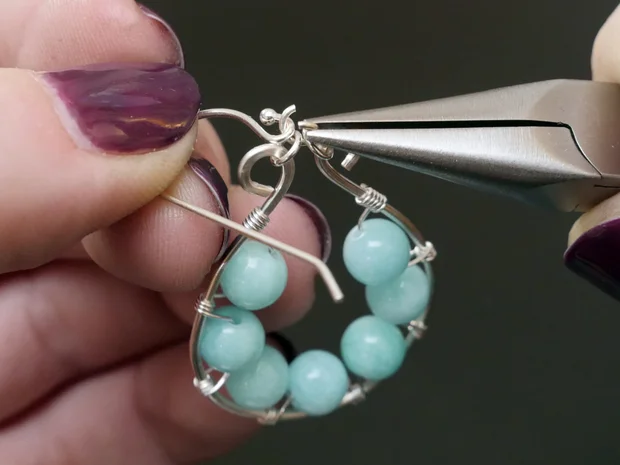Last Updated on February 9, 2025 by Bisma Sehar
Do you love handmade jewelry? Are you interested in learning more about the art of jewelry making? If so, you have come to the right place! In this blog post, we will discuss everything you need to know about handmade jewelry. We will cover topics such as materials, techniques, and styles. Plus, we will provide helpful tips and advice for anyone interested in starting their own jewelry-making business. So whether you are a beginner or a seasoned pro, this blog post has something for everyone!
Table of Contents
What is handmade jewelry? And more importantly, how does handmade jewelry differ from machine-made jewelry?
As the name suggests, handmade jewelry is jewelry made by hand. The history of handmade jewelry goes back centuries, and even today, many jewelry makers still create beautiful pieces using traditional methods. In contrast, machine-made jewelry is produced by machines. This type of jewelry is typically mass-produced in factories. While it can be difficult to find h-jewelry in stores, many online retailers sell handmade jewelry.
What materials are used to make handmade jewelry?
The most common material used in handmade jewelry is metal. Gold, silver, and copper are popular choices for experienced jewelers and beginners. Other common materials include gemstones, pearls, beads, and glass. Some Jewelry makers also use non-traditional materials such as wood or plastic.
What techniques are used to make handmade jewelry?
Over the years, handmade jewelry techniques have been passed down from generation to generation. Some of the most common techniques include soldering, hammering, stamping, and setting stones. While the methods of making h-jewelry don’t differ from machine-made jewelry, it’s the human effort that makes the piece unique and valuable.
What styles of handmade jewelry are there?
The style of handmade jewelry varies depending on the culture and region where it is made. For example, Native American jewelry often features turquoise and other natural materials. In contrast, Eastern European jewelry is often very ornate and delicate.
Why should you buy handmade jewelry?
If you hadn’t guessed already, the purpose of this piece is to nudge you towards purchasing h-jewelry. But why? Why should you buy handmade jewelry?
Every piece has a story:
One of the best things about handmade jewelry is that every piece has a story. When you buy h-jewelry, you are not just buying a piece of metal or stone; you are purchasing a work of art that someone has created with their own two hands.
It is unique:
Unlike mass-produced jewelry, h-jewelry is one of a kind. No two pieces are exactly alike, which means that the piece you purchase is truly special and unique.
You support local artists:
When you buy handmade jewelry, you support local artists and small businesses. In an age where big-box stores dominate the market, it is important to support independent retailers.
Not mass-produced:
Since every piece of jewelry is handcrafted, there is no mass production. This is good for the environment because it means no wasted materials or energy used in the production process.
The value of time:
When you buy h-jewelry, it’s not just about the piece itself. It’s also about the amount of time and effort invested by the artist in making the piece unique. It’s essentially a part of themselves, and that is something that you can’t put a price on.
Exclusivity:
Machines will keep going long after designers and artisans cease to exist. But there can only be a finite number of handmade jewelry pieces that an artist can create. It’s the very definition of exclusivity.
Buying handmade jewelry is an investment:
Not only are you buying a unique piece of jewelry, but you are also investing in a future family heirloom.
How to take care of your handmade jewelry?
Caring for your handmade jewelry properly will ensure that it lasts for years to come. Here are a few tips on how to take care of your precious pieces:
Store it properly:
When you’re not wearing your jewelry, store it safely. That’s just common jewelry etiquette. A good rule of thumb is to keep it in a soft cloth pouch or lined box.
Keep it clean:
Over time, dirt and oil can build up on your jewelry, making it look dull. To clean jewelries, use mild soap and warm water. Avoid using harsh chemicals or cleaners as they can damage the material.
Be careful:
Handmade jewelry is delicate, so handle it with care. Avoid wearing it while doing strenuous activities or in situations where it could get damaged.
Now that you know everything there is to know about handmade jewelry go out and start shopping! And remember, when in doubt, always ask the artist for advice on how to best take care of their piece. With a little bit of care, your h-jewelry will last you a lifetime.
Overview
The Complete Guide to Handmade Jewelry is a comprehensive resource for anyone interested in the art of making handmade jewelry. This guide covers everything you need to know, from the basics of jewelry making to advanced techniques and tips for selling your creations.
The guide begins by introducing the tools and materials you’ll need to get started, including various types of wire, beads, and findings. From there, it covers the fundamental techniques of jewelry making, such as wire wrapping, bead stringing, and metal stamping. The guide also includes more advanced techniques like metalworking, enameling, and soldering.
One of the unique features of this guide is its emphasis on eco-friendly and sustainable jewelry-making practices. It offers tips on sourcing materials responsibly, using recycled materials, and minimizing waste.
The guide also includes a section on selling handmade jewelry, with advice on creating a brand, setting prices, and marketing your products. Additionally, it features profiles of successful jewelry makers and their stories, providing inspiration and insights into the business of jewelry making.
Read More: Is Public Relations Dead?
















